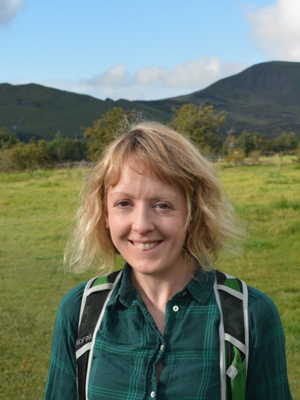Forests and woodlands represent just over one-eighth of the total land area in the UK. They provide habitats for myriad animals and help to maintain the balance of the air around us, while nurturing the human instinct for getting lost and having adventures.
Ancient woods offer a particularly special experience. They make demands on us to walk slower, be quieter, be still and listen to the age-old wisdom of trees. Age matters in nature, it fosters continuity. Continuity matters in nature, it fosters stable ecosystems. Stable ecosystems matter in nature, they maximise opportunities for wildlife.
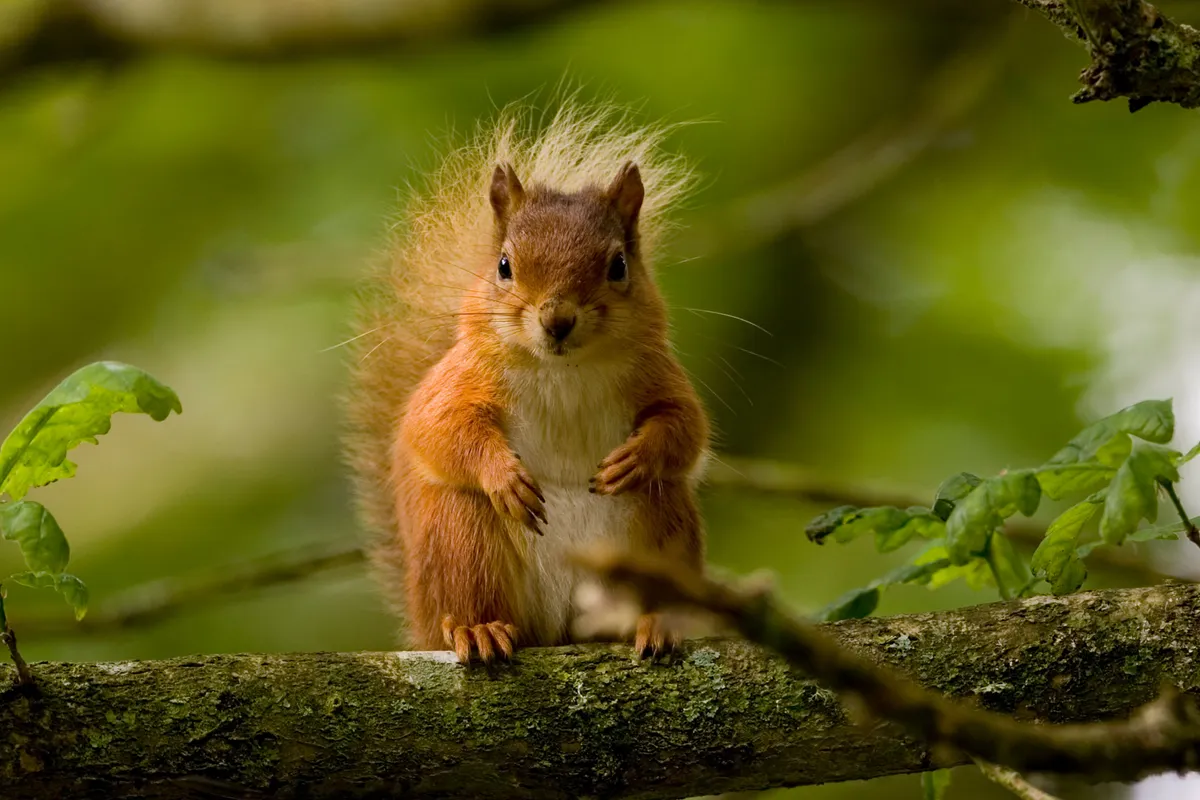
Whether you're looking for a magical autumn walk, a refreshing summer stroll or a winter wander, our forests and woodlands offer the perfect setting for a day out in the countryside. Learn all about the history of our forests, how many there are in the UK, and discover the best forests and woodlands near you for a walk with our expert guide.
Want to make your woodland experience even more of an adventure? Our guide to the best forest campsites in the UK reveals which forests offer camping and what wildlife you can expect to encounter at each location.
The most magical forest and woodlands to visit in England
Forest of Dean, Gloucestershire
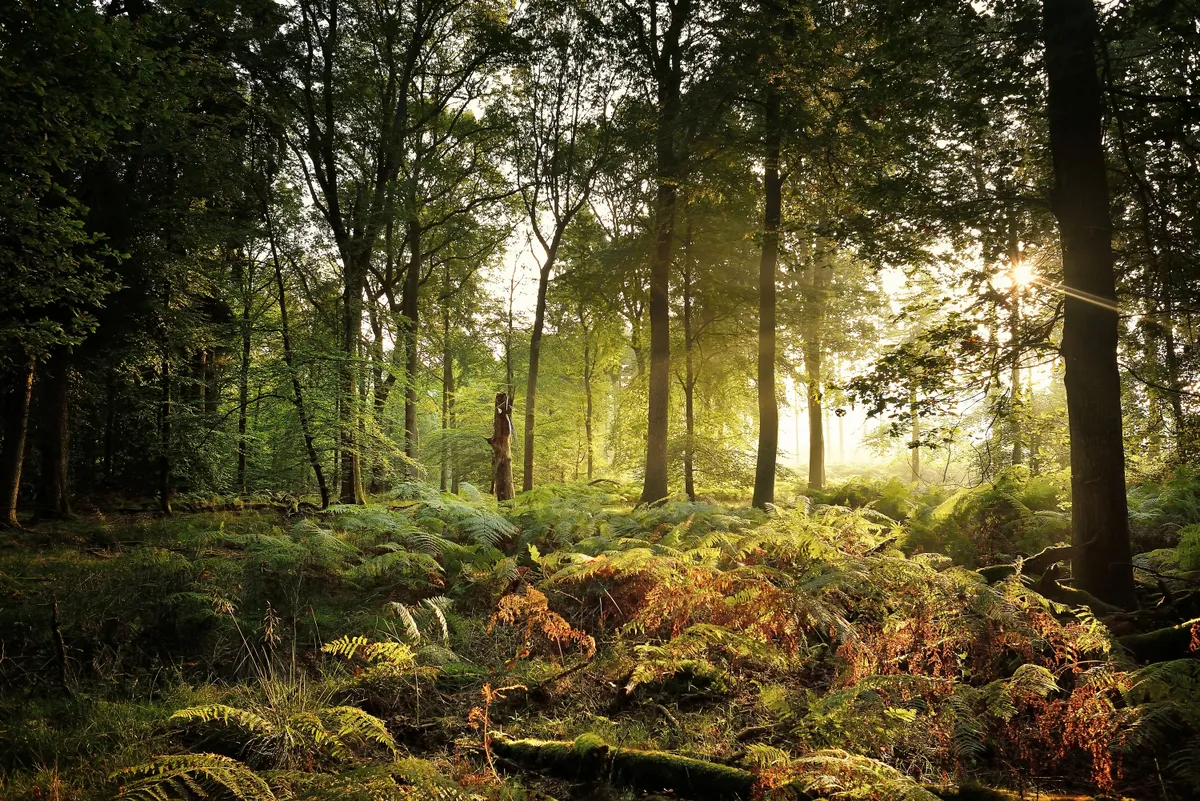
In Autumn, amid a ruddy blaze of oaks, beeches, larches and sweet chestnuts, it’s easy to forget that the Forest of Dean has been shaped by industry, from tree-felling for shipbuilding in the 16th century to coal mining in the 19th and early 20th centuries. Relics of this past are dotted throughout the forest, including the former Lightmoor Colliery at Foxes Bridge, which closed in 1930.
Just west of the main area of forest is the enchanting Puzzle Wood, a fairytale woodland with mossy banks, huge ferns and unique rock formations.
Explore this spectacular forest with a family bike ride through over muddy trails in search of one of Britain’s most elusive mammals, the wild boar.
- Take a bike ride around the Forest of Dean
- Enjoy a walk through the Forest of Dean
- Listen to a podcast about the joy of riding an electric bicycle in the Forest of Dean
Grizedale, Cumbria
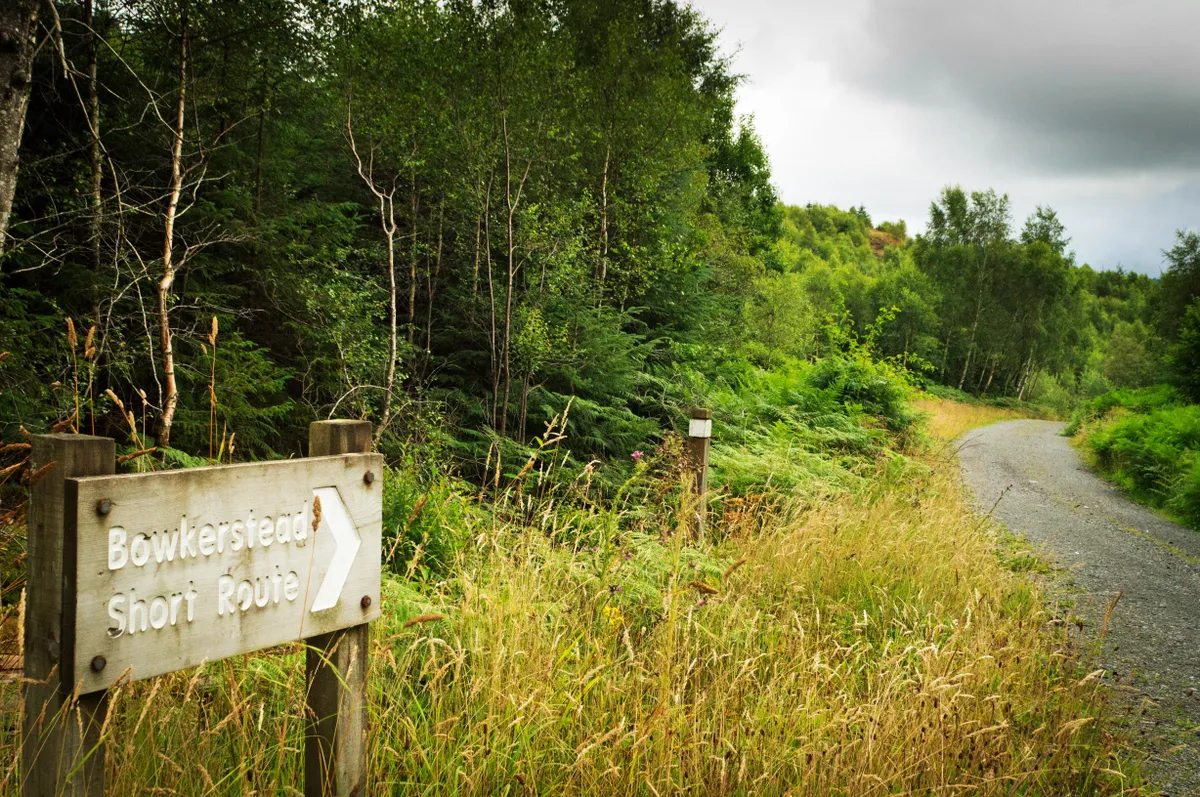
Set right in the heart of the Lake District, between Windermere and Coniston, Grizedale Forest offers wonderful walks, thrilling mountain bike trails and artful sculptures, not to mention the stunning views across the waters and mountains.
Home to the only remaining indigenous woodland red deer herd in England, Grizeland is a haven for wildlife with roe deer and red kites to be seen along with barn owls and buzzards.
- Find magical sculptures among the trees on an eight-walk through this hilly Lake District forest
- Cycle a forest trail through Grizedale
Epping Forest, Essex
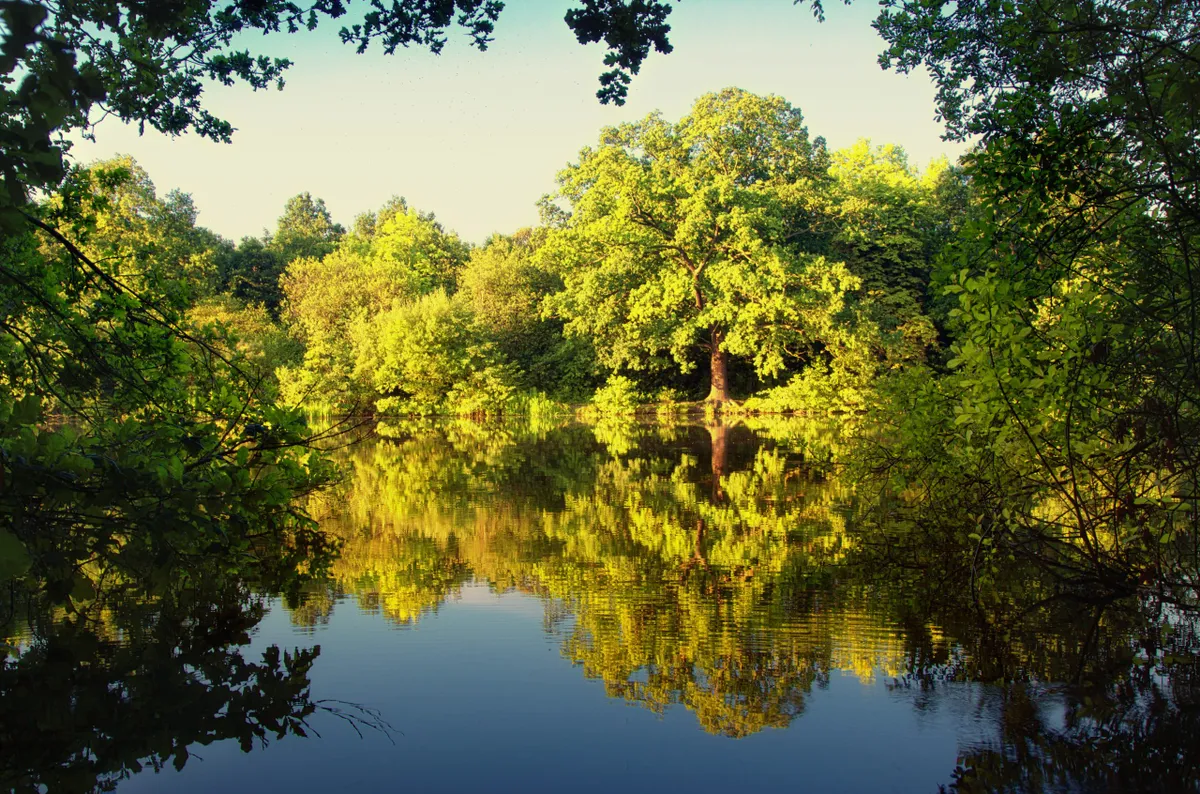
There are over 2,400 hectares of historic woodland in this former royal hunting forest, as well as more than 100 bodies of water, some of which have formed in the remains of Second World War bomb craters.
The woodland, managed by the City of London Corporation, was pollarded in the 19th century, resulting in some interestingly shaped trees. Look out for beech, oak, hornbeam, silver birch and holly, as well as fallow and muntjac deer, European adders, rare plants and fungi.
Epping Forest is only a short overground journey from the centre of London and offers more than 50 miles of off-road bike trails.
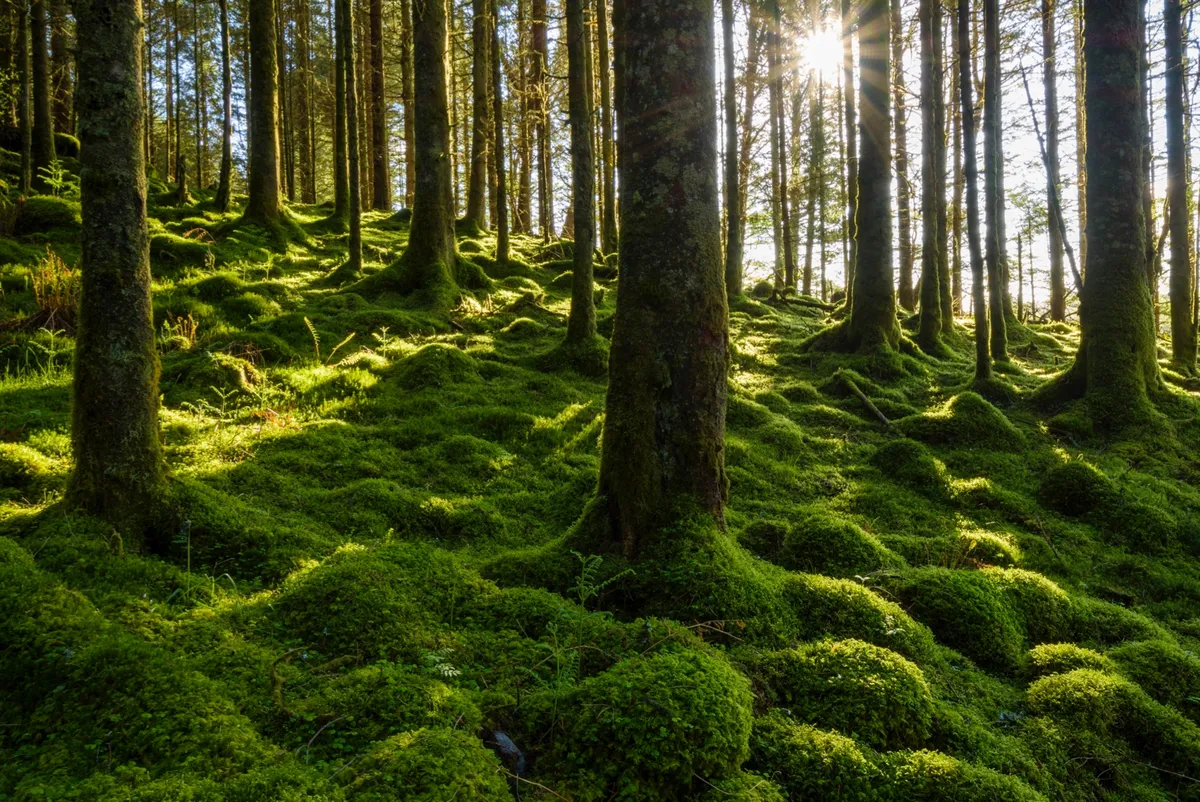
Fingle Wood and Hannicombe Wood, Devon
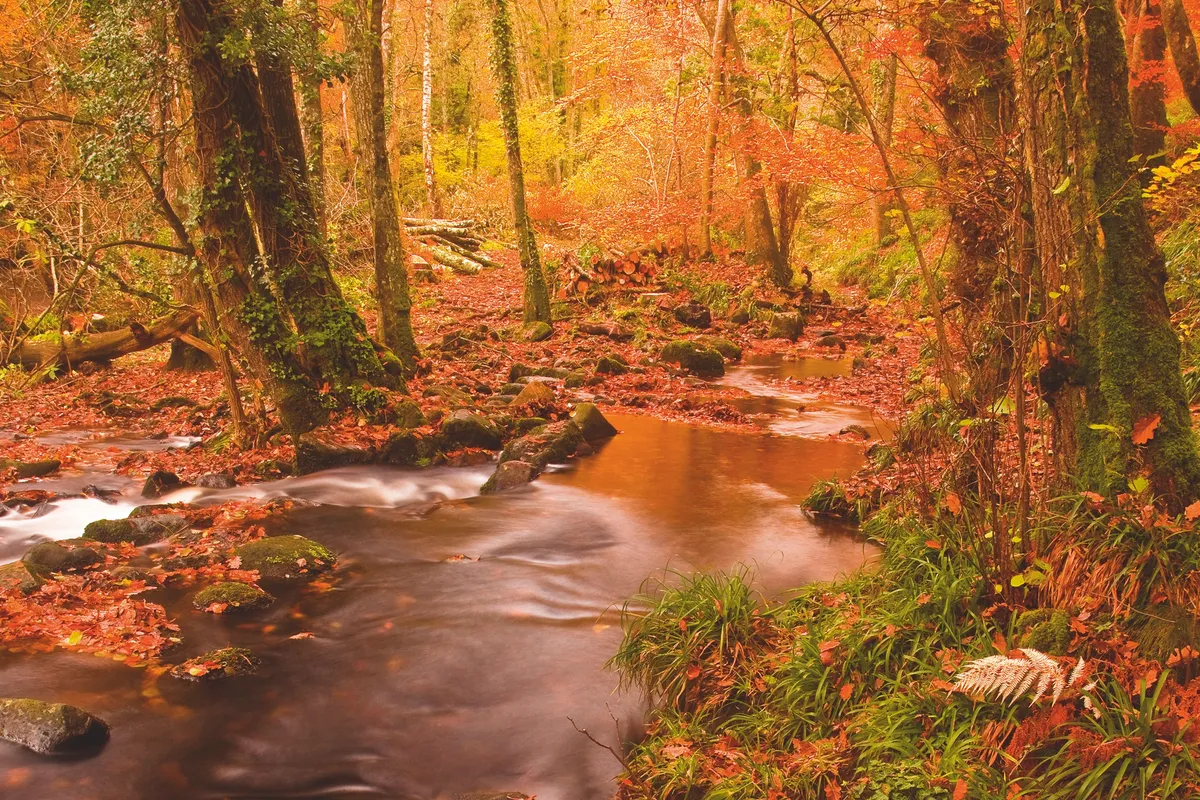
Some 3,000 years ago, in the Iron Age, these woods were a hub for timber production and hunting. Over time, depletion of the forest’s resources caused its rich ecology to suffer (the lofty oaks that remain could surely tell some tales). For years, conifers dominated the gorge, but the woods are now being restored to their former deciduous glory. The National Trust and the Woodland Trust are overseeing this spectacular transformation, making it one of the largest woodland restoration projects in England.
- Walk from Castle Drogo through Fingle Wood to Teign Gorge and see the restoration in action
Rydal and Grasmere, Cumbria
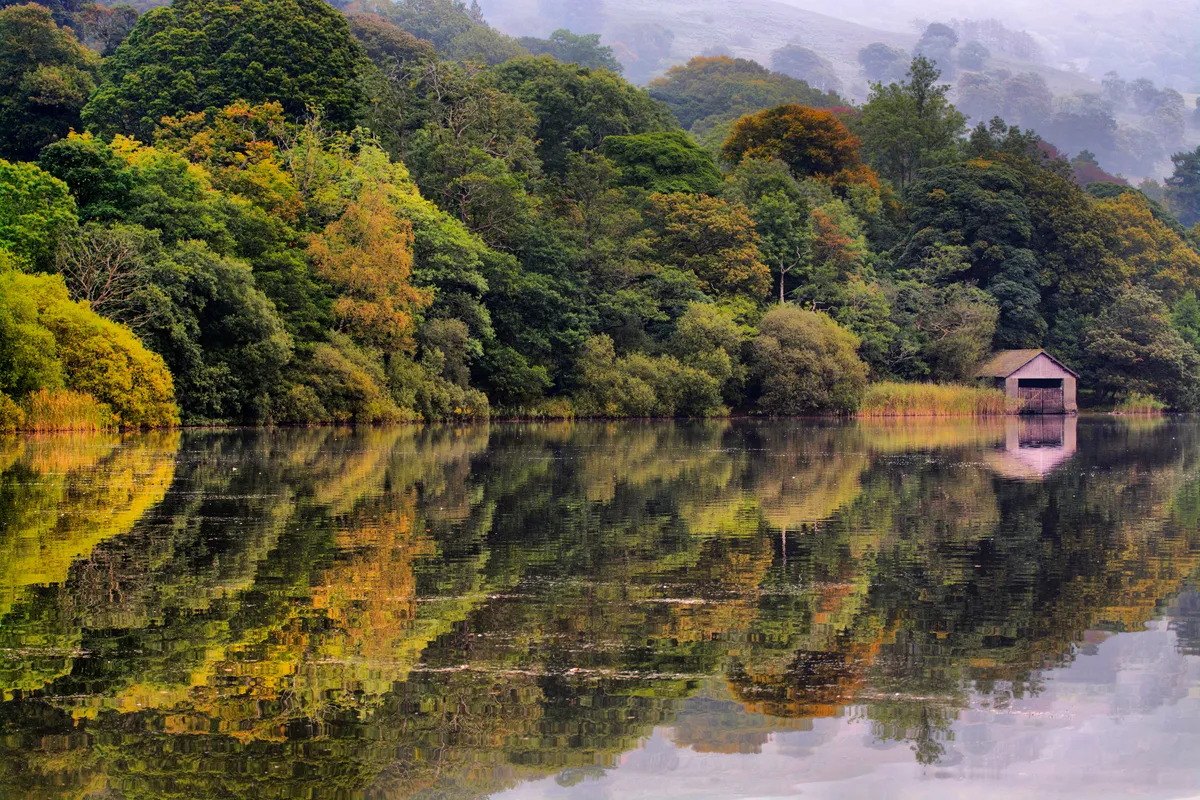
On 23 October 1802, Dorothy Wordsworth wrote in her journal: “A breathless, grey day that leaves the golden woods of autumn quiet in their tranquillity, stately and beautiful in their decaying. The lake is a perfect mirror.”
A six-mile circular tour around Grasmere and Rydal Water – passing through High Wood, Knott Wood, Deerbolts Wood and Nickolas Wood – illustrates perfectly how her description of the autumnal landscape is just as evocative today as it was when she wrote it in her journal 215 years ago.
What is forest bathing?
Forest bathing is a type of natural therapy which involves 'immersing' yourself in a woodland or forest and 'bathing' amongst the trees.
Kielder Forest, Northumberland
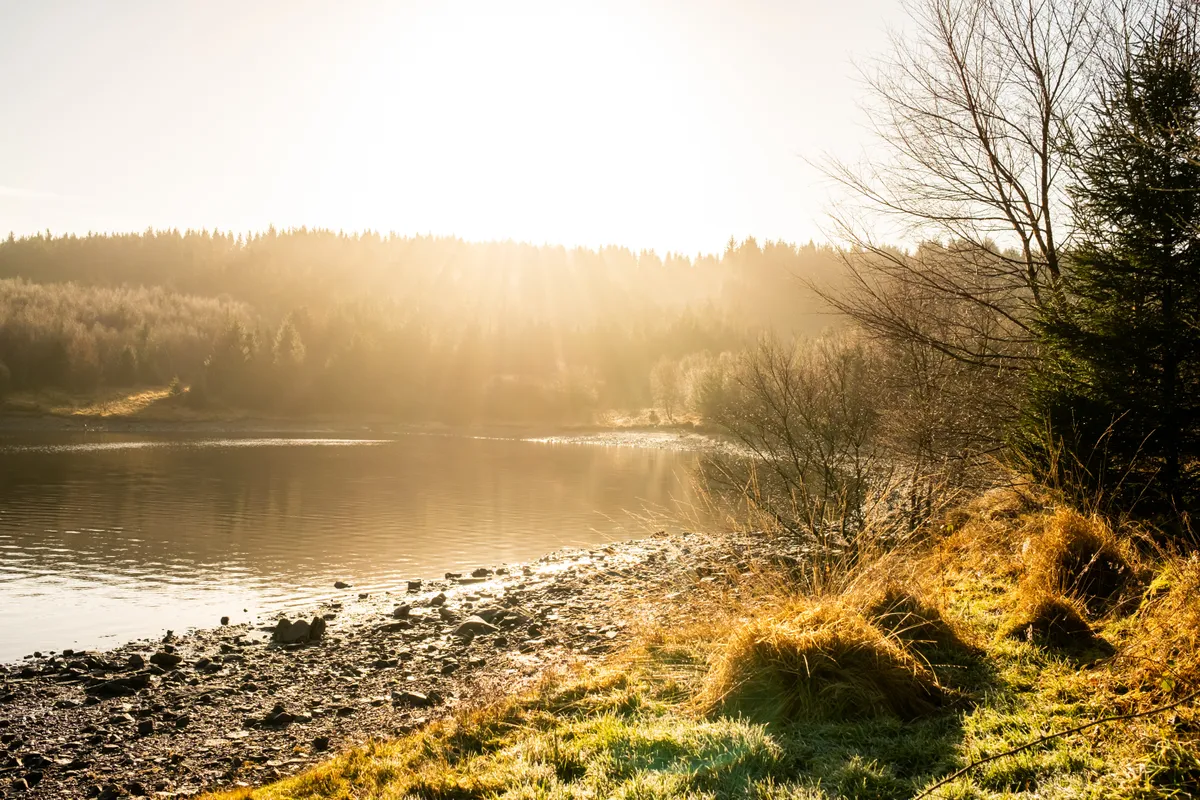
Explore tranquil Kielder Water and Forest, the uk’s largest man-made lake, tethered to the western border of Northumberland National Park. Surrounding the water is the largest working forest in England (250 square miles), home to a wealth of wildlife, including ospreys.
Walk the Lakeside Way, a 27-mile multi-access trail that circumnavigates the lake.
Friston Forest, East Sussex
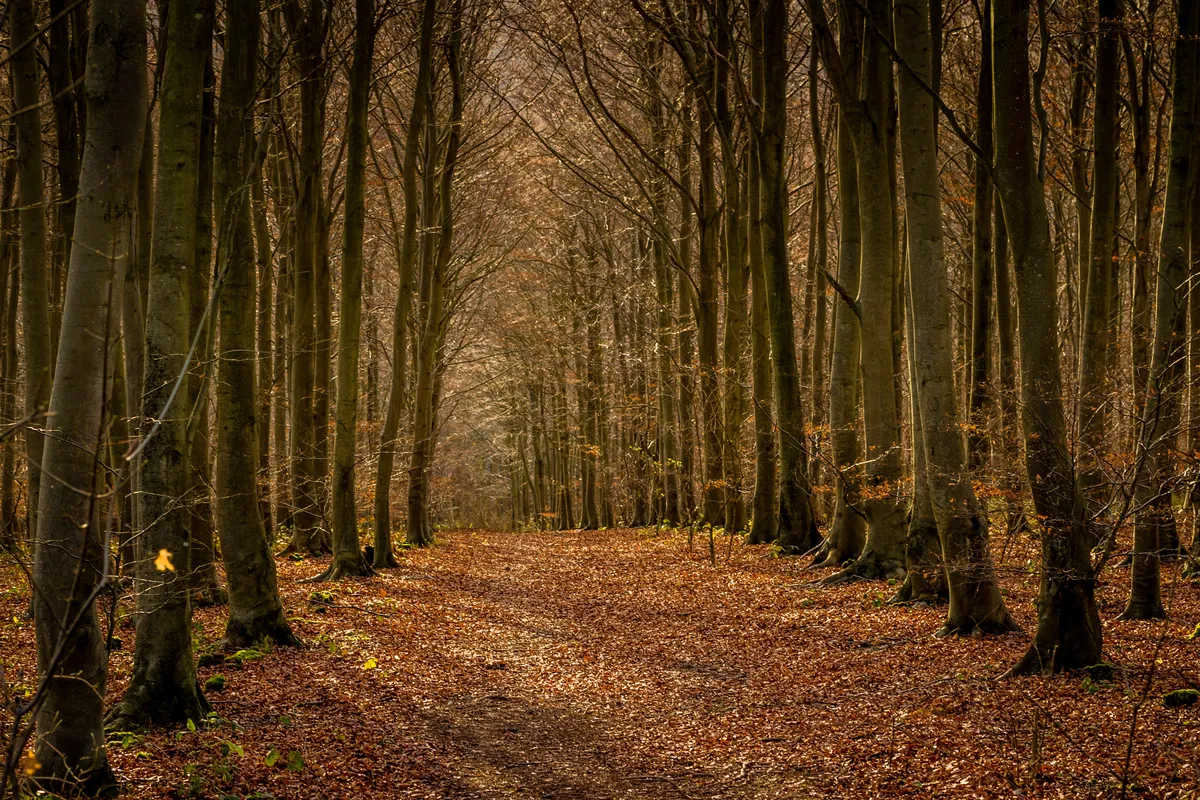
At 850 hectares, it is the largest area of recently planted woodland in Sussex. But what it might lack in antediluvian grandeur, the forest makes up for in cool, calm, undulating quietude. Originally interspersed with blocks and rows of dense conifers to protect the broadleaf saplings, most of the Norway spruces and Corsican pines have now been cleared, leaving an open woodland with a light airy understorey.
Rivington Wood and Lever Park, Lancashire
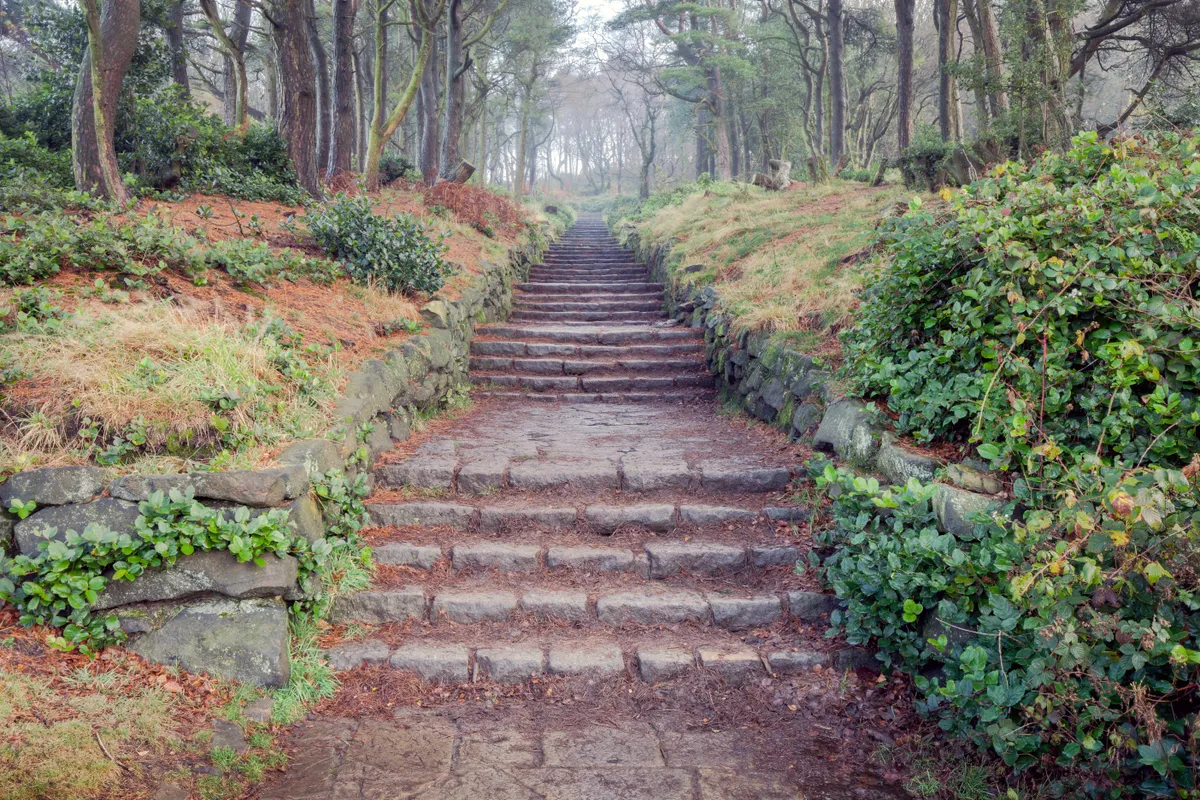
In the early 20th century, soap baron Lord Leverhulme created a terraced garden of Japanese lakes, pagodas, archways, Romanesque bridges and an elaborate ballroom. By 1925 it was all abandoned and today is being reclaimed by nature – and trees.
Like the remains of a lost civilisation, the ruins and follies of Lord Leverhulme’s terraced gardens add a real spirit of adventure and discovery to an autumn exploration of Rivington Wood.
- Unearth crumbling archways and overgrown terraces with our three-mile walk in Rivington Terraced Gardens
Hackfall, North Yorkshire
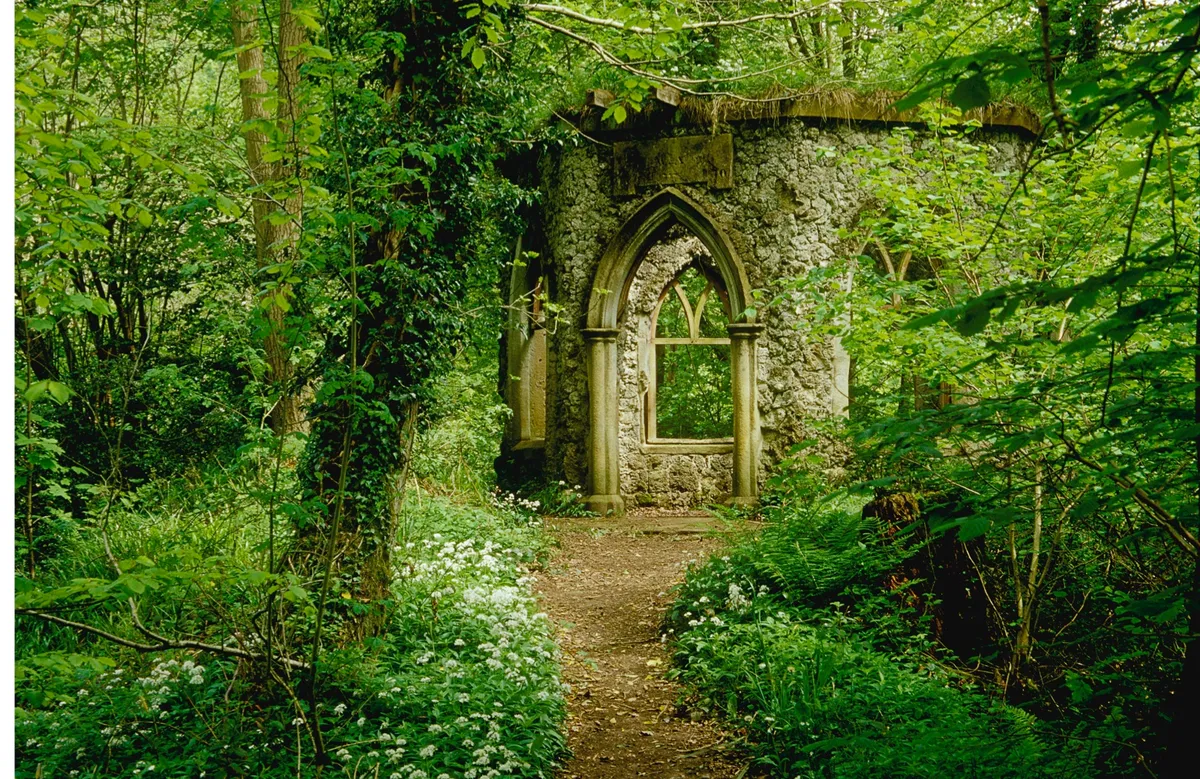
The beautiful Hackfall Wood near the village of Grewelthorpe between the Yorkshire Dales and Moors appears to be wholly natural but it in fact owes a lot of its current appearance to the intervention of John Aislabie, who bought the land in the 18th century, and his decedents. John was famous for his landscaping work at Fountains Abbey, while his son William built many follies in the woods that line the winding River Ure. Recommended by Wordsworth in his tour guides and responsible for inspiring JMW Turner, this is enchanting woodland.
- Explore the Yorkshire Dales on foot with our favourite national park walks
- 10 great wildlife walks in the Yorkshire Dales
- Guide to Yorkshire: where to stay and eat, places to visit and best walks
Yarncliff Wood and Bolehill Wood, Derbyshire
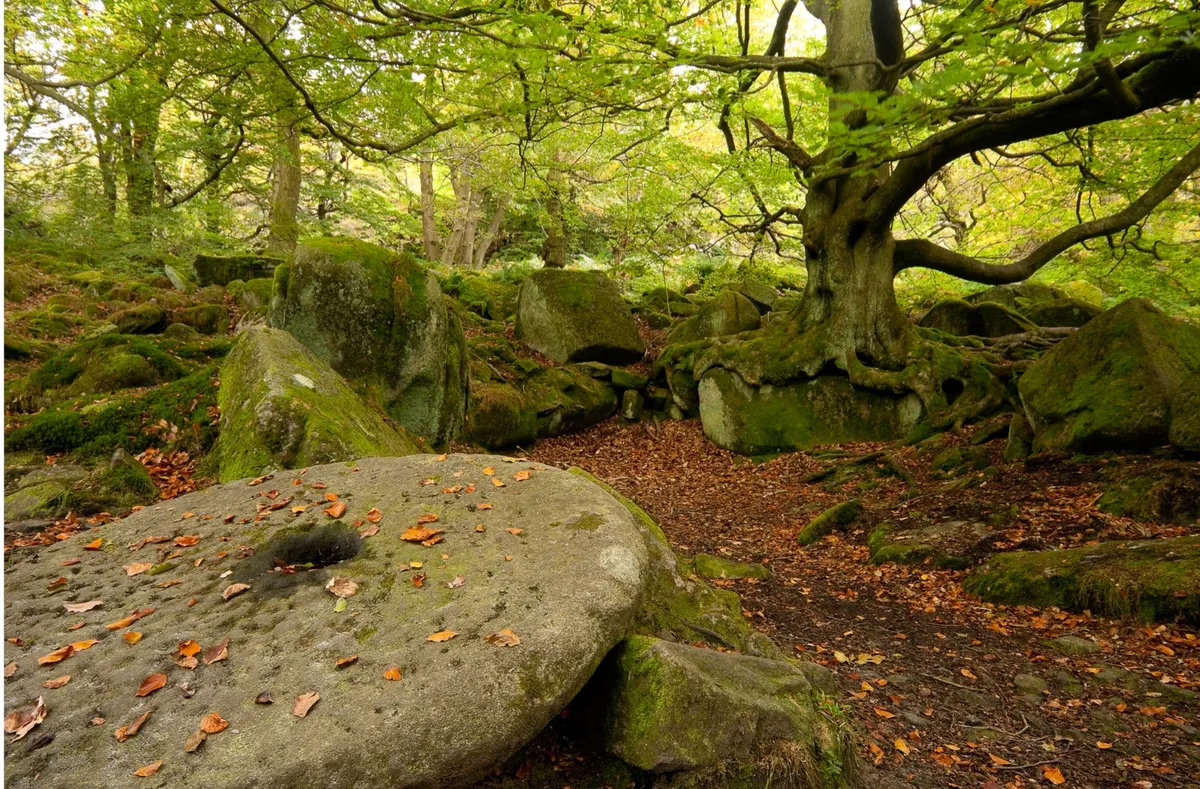
The river Derwent arcs through the eastern Peak District in a wooded vale with looming moorland shoulders. Tributaries tumble from the tops, foaming amid wizened woodlands little-changed in centuries. Padley Gorge has the best of these, draining Burbage Moor to the Derwent at Grindleford. An enchanting stroll explores this chasm before looping up through Yarncliff Wood and Bolehill Wood, shrouded industrial heritage.
Cragside, Northumberland
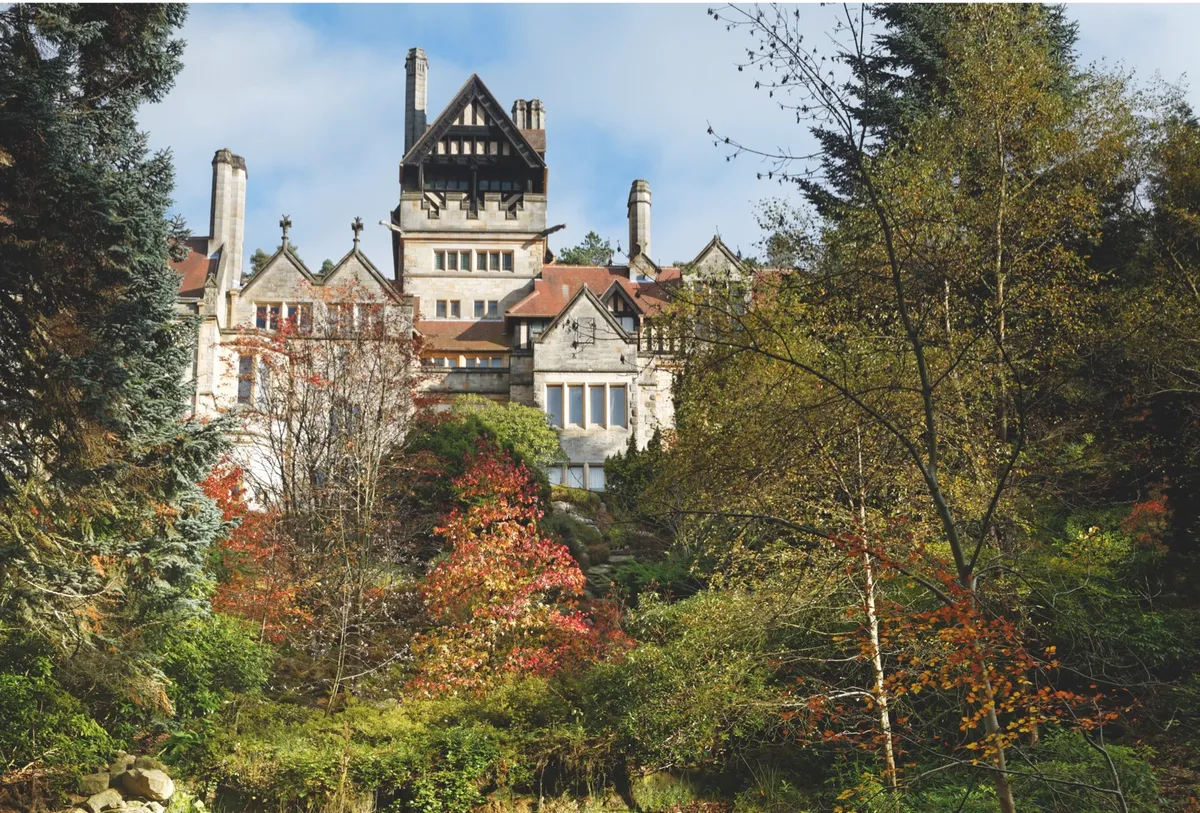
A grand water-powered mansion, built by a vastly wealthy and eccentric Victorian inventor, cloaked in dense woodland dotted with follies, grottos and burbling brooks. It sounds a place conjured in a work of fiction, but Cragside does indeed exist, in the wilds of Northumberland.
Take a walk through the grounds and look out for Douglas fir, western hemlock, giant sequoia – some towering above 50m – along with beech, Norway spruce, pedunculate oak, Norway maple, Scots pine, larch, common lime and silver birch, creating a majestic riot of autumn colour. It’s a true woodland wonder.
Savernake Forest, Wiltshire
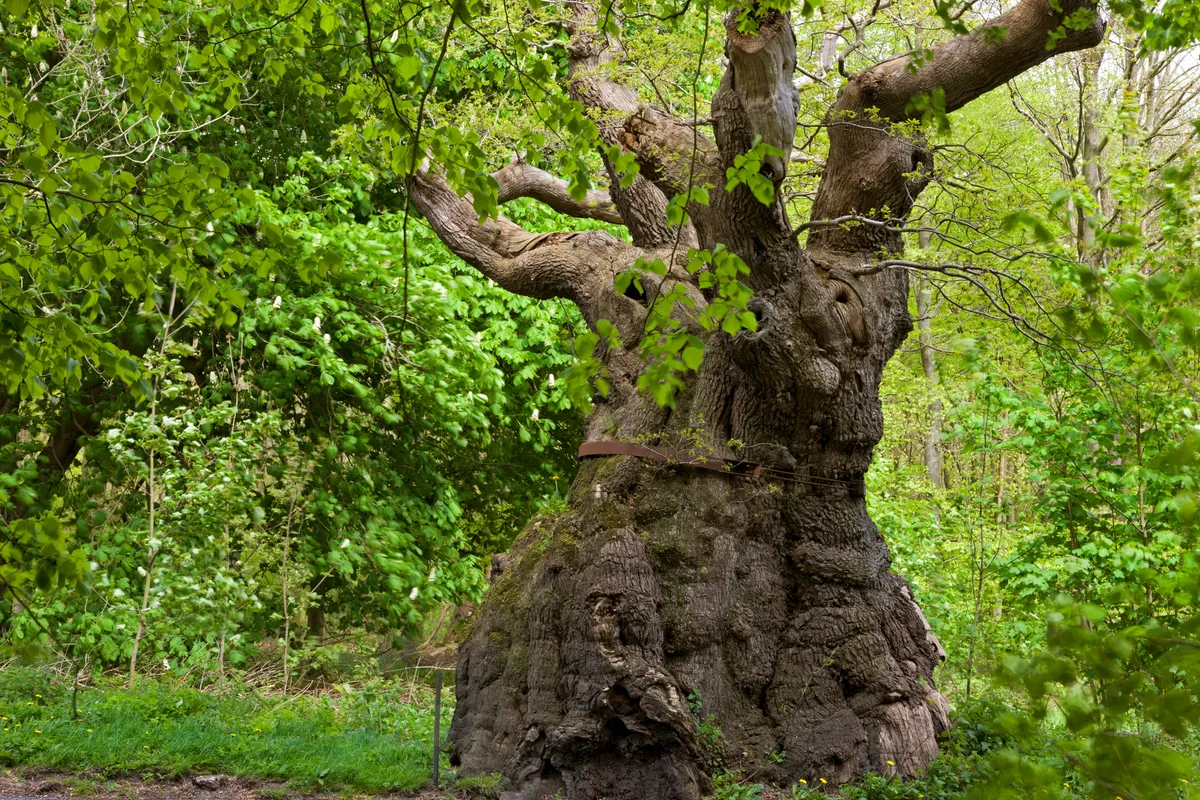
A few miles south of the historic town of Marlborough lies a sprawling 2,750-acre forest, once a popular hunting area where royalty chased stags past trees that still stand today. During its ownership by the Seymours, Henry VIII courted the future queen Jane under its canopy.
Savernake is now in private ownership, but open to the public and managed by the Forestry Commission. It is believed to hold the highest concentration of veteran trees in Europe. Several of these specimens have been bestowed with names that reflect their age and history, including the imposing Big Belly Oak, one of the oldest oak trees in Britain.
- Take a walk exploring Savernake Forest
- See how to camp in Savernake in our guide to the Best forest campsites in the UK in 2023
Macclesfield Forest, Cheshire
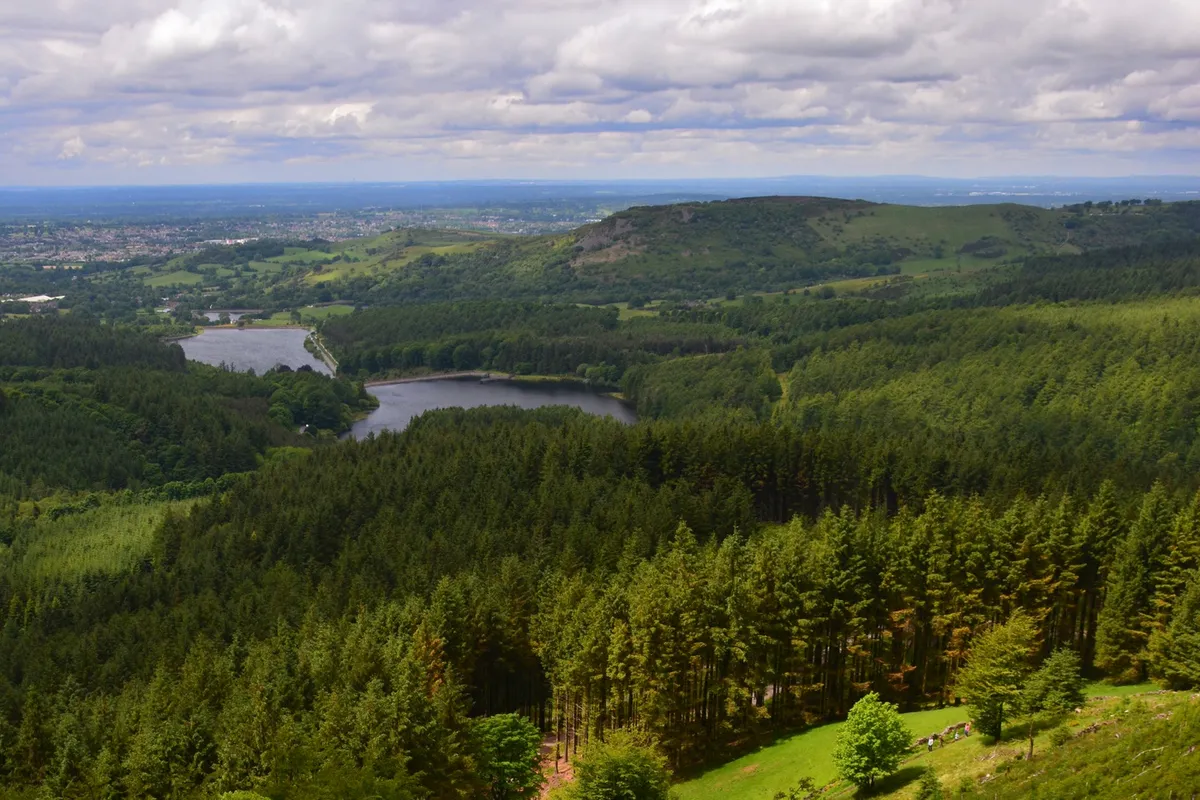
Spring is the perfect time to explore the remnants of the Norman hunting forest high above Macclesfield, where an abundance of birds and woodland flowers, including bluebells, will remain in the memory. Firm tracks and paths draw you upwards through mixed fir and broadleaf woods to moorland edge pasture, generously endowed with views to nearby Shutlingsloe and the great ridge, topped by Cheshire’s highest point, Shining Tor.
Hatfield Forest, Essex
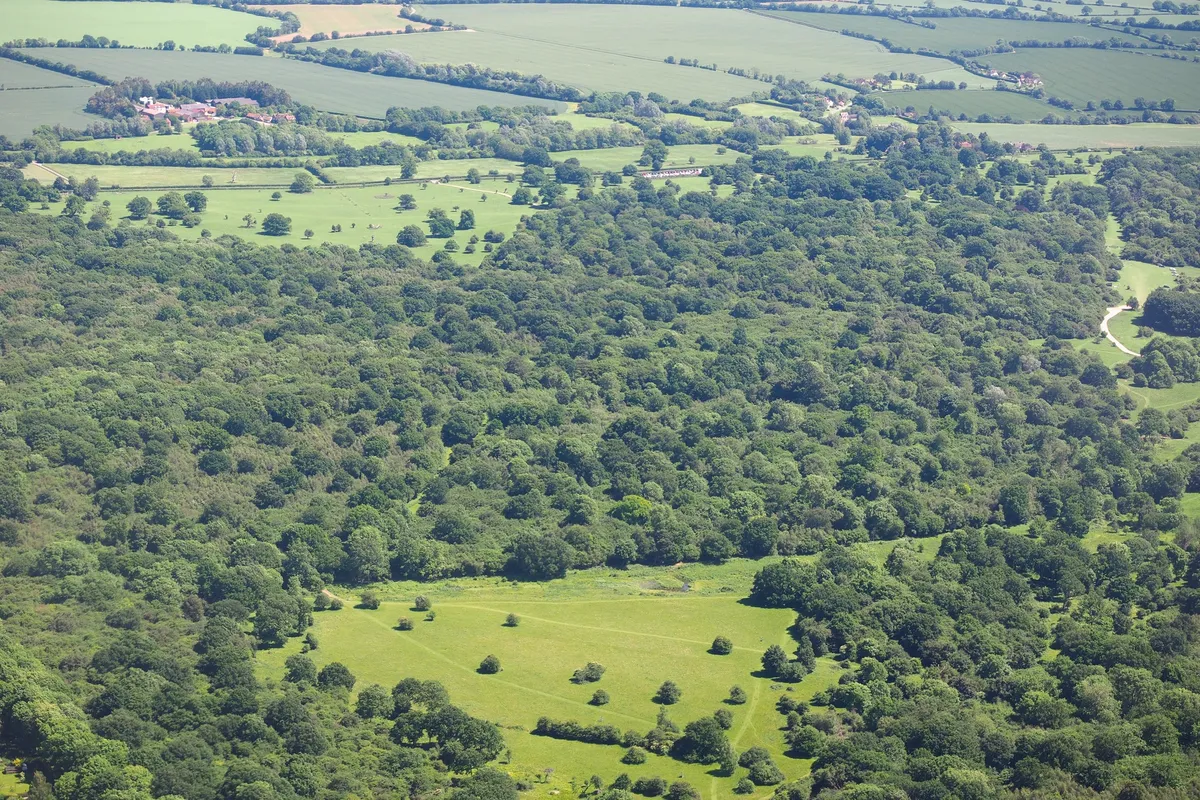
Among the oldest hunting woodlands in Europe, Hatfield Forest is home to spectacular ancient trees and wildlife. There are a range of tracks that meander past the lake and through the leafy forest, with Iron Age settlements, grassy meadows and ancient habitats to explore.
The 424 hectares of medieval woodland boast an extraordinary wealth of wildlife, including green and great spotted woodpeckers, badgers and muntjac deer. The lake, surrounded by dense greenery and lush marshes, attracts nesting terns in spring, and great crested grebes.
Best forests and woodlands in Northern Ireland
Tollymore Forest, County Down
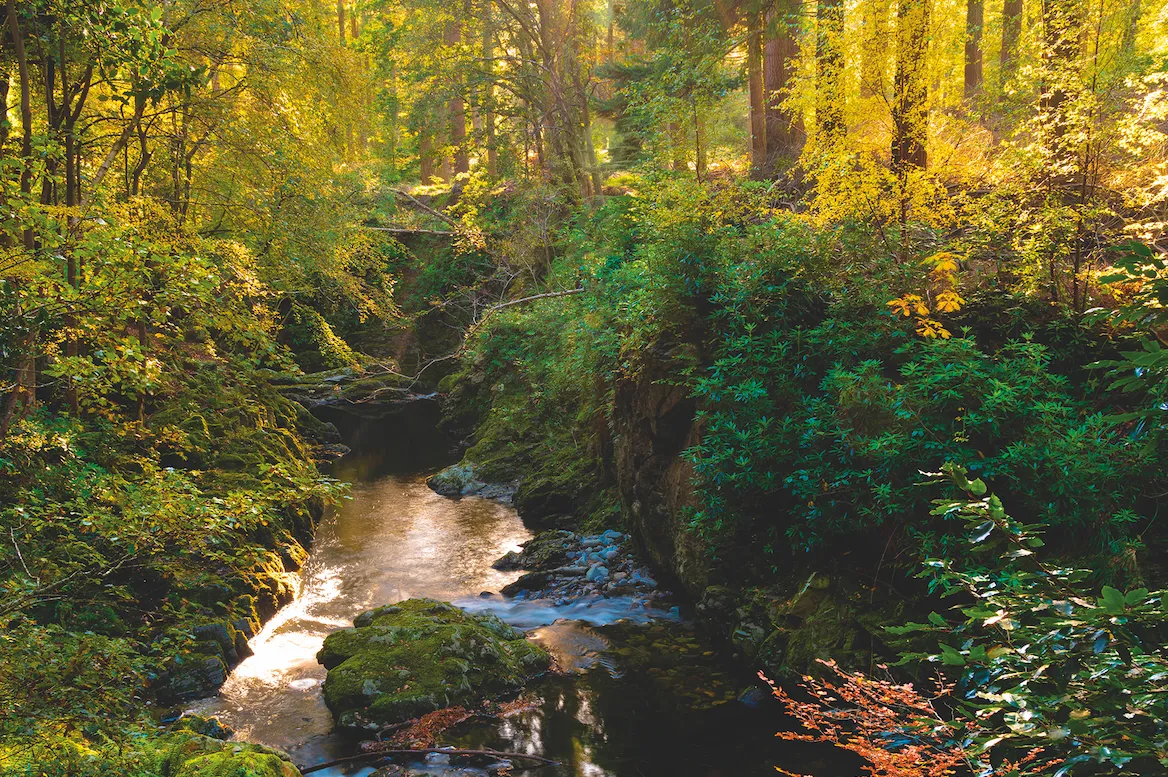
In autumn, burnt-orange beech leaves cling to ashen spurs, their increasing minimalism countered by majestic evergreens and low-lying reefs of mosses, liverworts and feathery ferns. The forest’s saturation and decay are palpable.
The slopes around the Shimna River are home to a remarkable number of tree species, including oak, beech, ash, birch, larch, Sitka spruce, yew and willow. Field maple, Himalayan cedar, eucalyptus, Douglas fir, Monterey pines, monkey puzzle and giant redwoods can also be found.
Lough Navar Forest, County Fermanagh
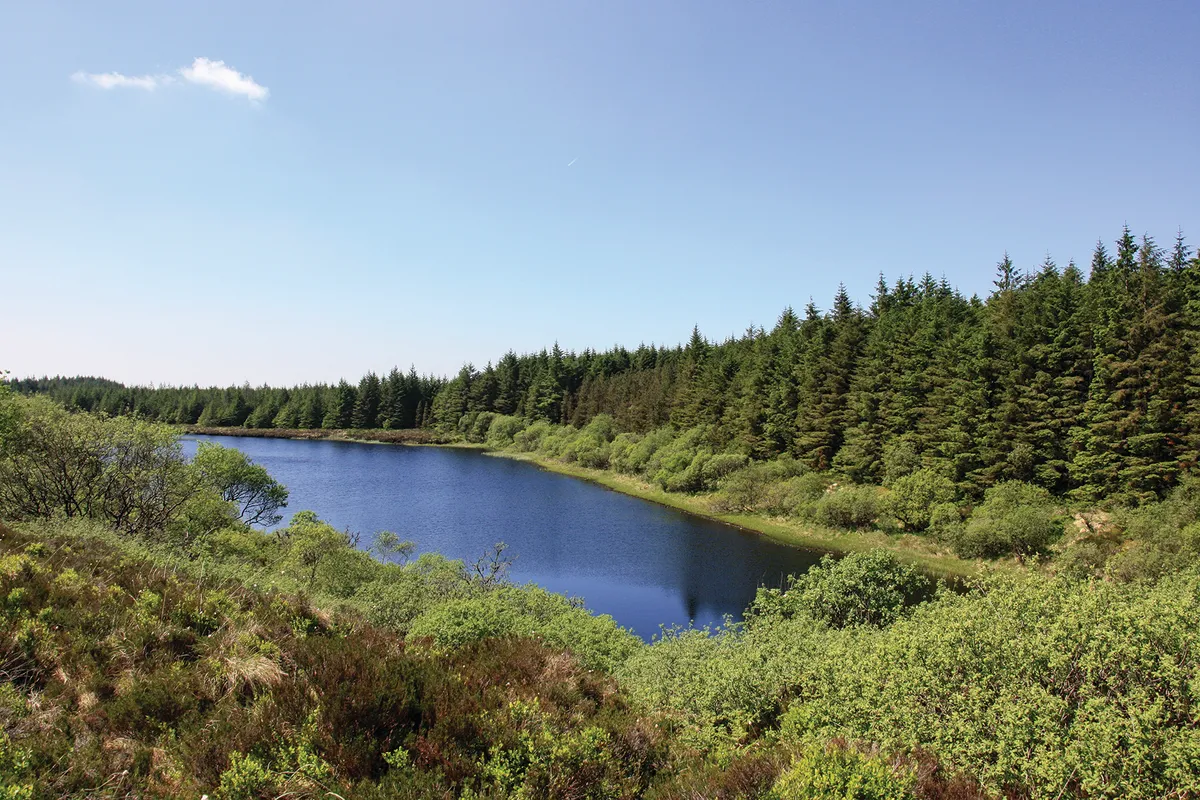
High above the shimmering, island-strewn waters of Fermanagh’s forgotten lakes is a great forest. Part conifer, part deciduous, the trees here grow tall, shielding a hidden complex of bog, heath, open water and rich limestone grassland.
In spring, swathes of cotton grass nod among the bogs, bluebells break the grassy glades and brown trout send ripples across the forest’s four freshwater loughs. Even the thickest conifer stands feel the influence of spring, their canopies breached here and there by the high May sun.
Banagher Glen, County Derry
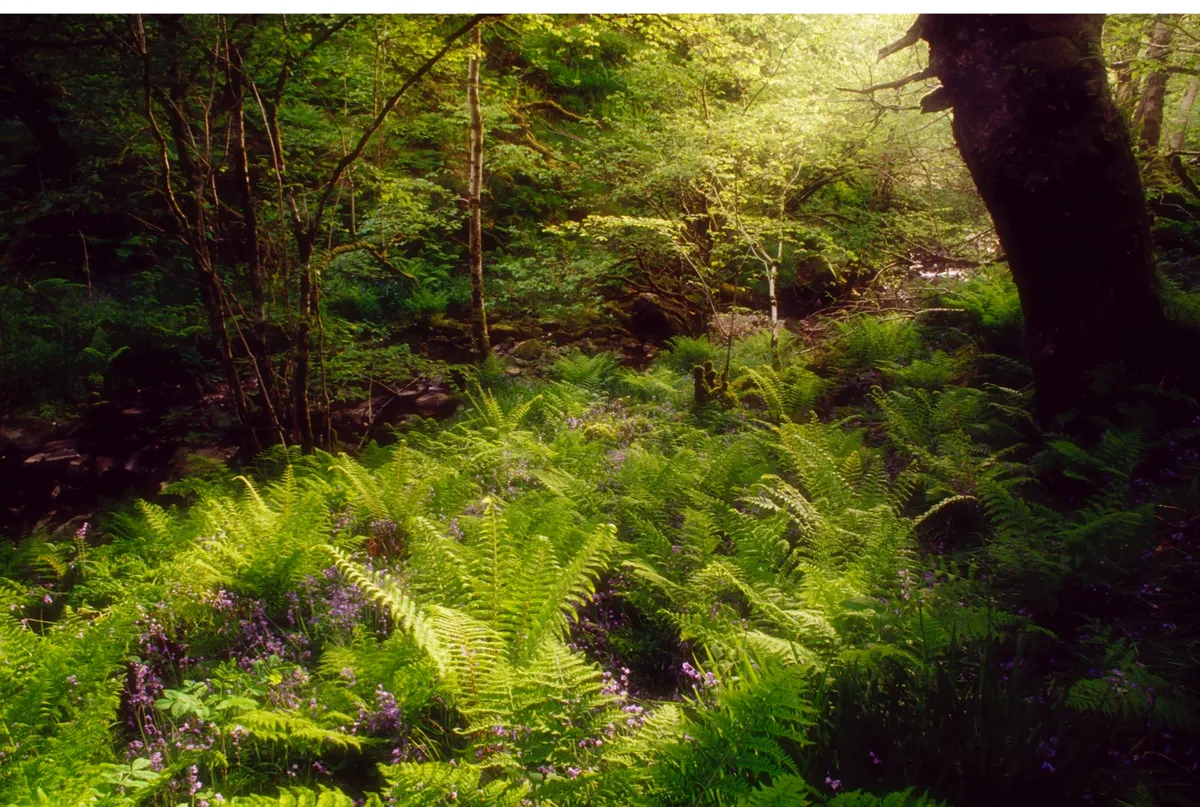
Banagher Glen in Northern Ireland is one of very few pieces of forest in the United Kingdom that is just about untouched by human hands – at least as far as deforestation is concerned.
Set back upon a steep ravine, carved out by the Glenedra and Altnaheglish rivers, the trees are difficult to access and have therefore made cutting them down more effort than it was worth. The oak, ash, hazel, hawthorn and holly trees provide an excellent habitat for wildlife, including red squirrels. Legend has it that St Patrick trapped the last snake in Ireland in the woods, where it still lurks to this day.
Best forests and woodlands in Scotland
Mabie Forest, Dumfries and Galloway
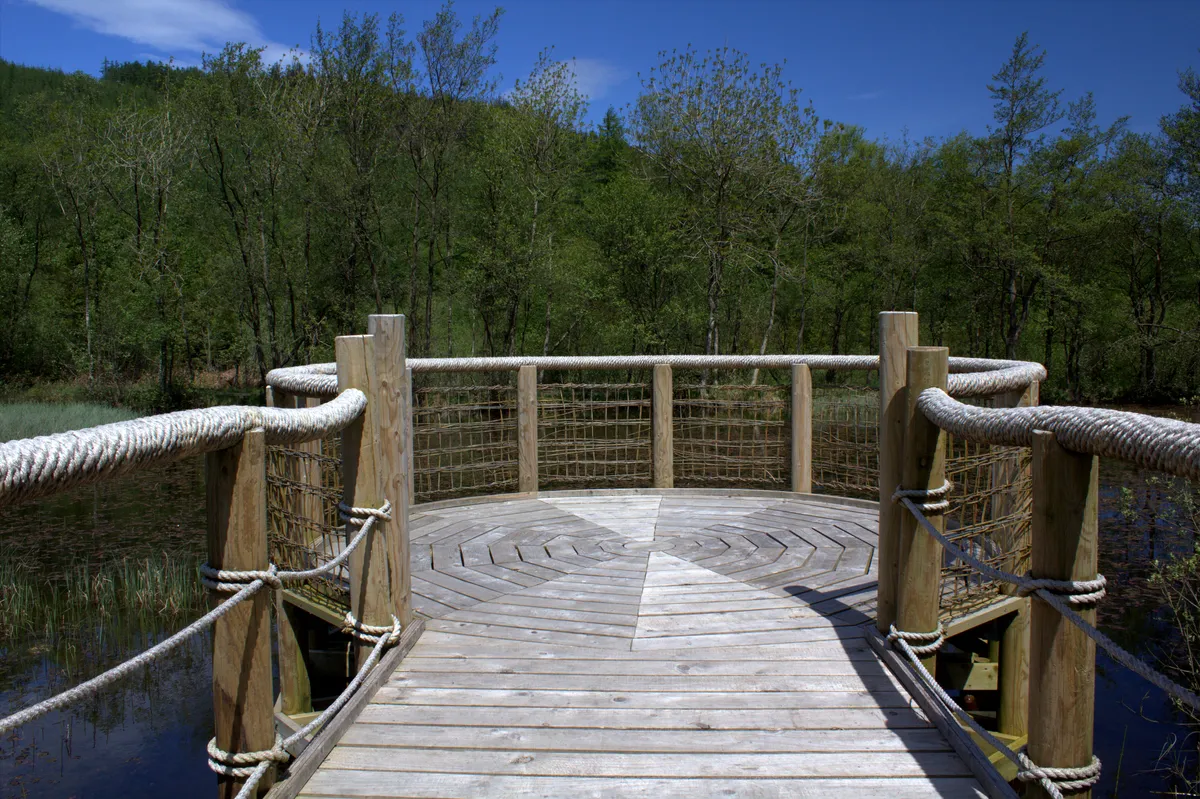
Forestry and Land Scotland’s Mabie Forest lies just outside the town of Dumfries in south-west Scotland and is managed in association with Butterfly Conservation Scotland, whose reserve – their largest – occupies 100 hectares in the middle of the forest. Ancient oak woodland, wetlands and grassland are all here, offering ideal conditions not just for butterflies, but also bats, red squirrels, roe deer and dragonflies.
Baluain Wood, Perthshire
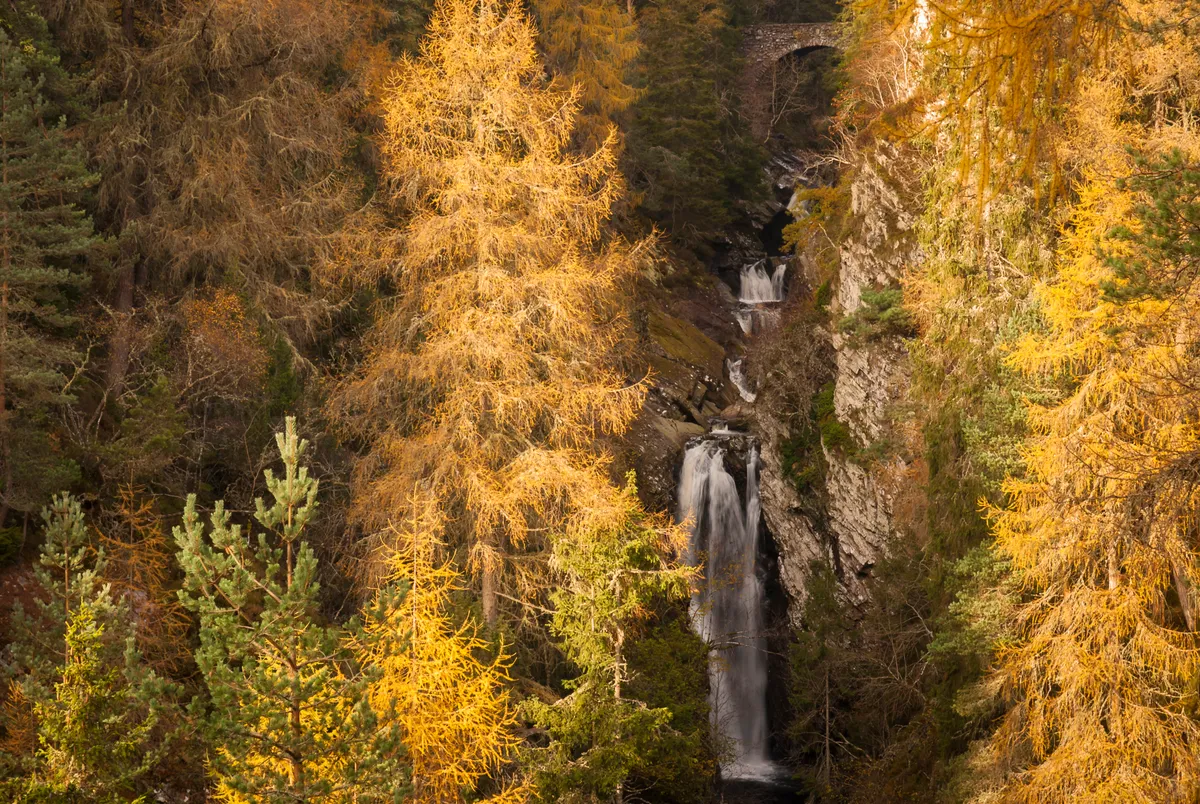
Pull on your boots and step into a reclaimed forest, climbing through trees of golden larch, towering Scots pine and magnificent mountain ash in search of a roaring Cairngorms cascade.
In the late 18th century, this narrow glen was virtually devoid of trees. Following a visit in 1787, Robbie Burns wrote “The Humble Petition of Bruar Water to the Noble Duke of Atholl”. This 11-verse poem contains the lines:
"Would then my noble master please,
To grant my highest wishes?
He’ll shade my banks wi’ tow’ring trees,
And bonnie spreading bushes."
Much to his credit, the Fourth Duke of Atholl acquiesced and the first trees were planted in 1797. The Fourth Duke of Atholl Lord John Murray’s ambitious planting scheme would eventually include 120,000 larch and Scots pine. In time, Planter John, as he became known, was to plant over 15 million trees throughout his estates, many of which, today, create an unbridled display of golden glory during the months of September, October and November.
- Explore Baluain Wood and walk the falls of Bruar in Perth and Kinross
- Burns Night: traditions, recipes and great Scottish walks
Elibank and Traquair Forest, Scottish Borders
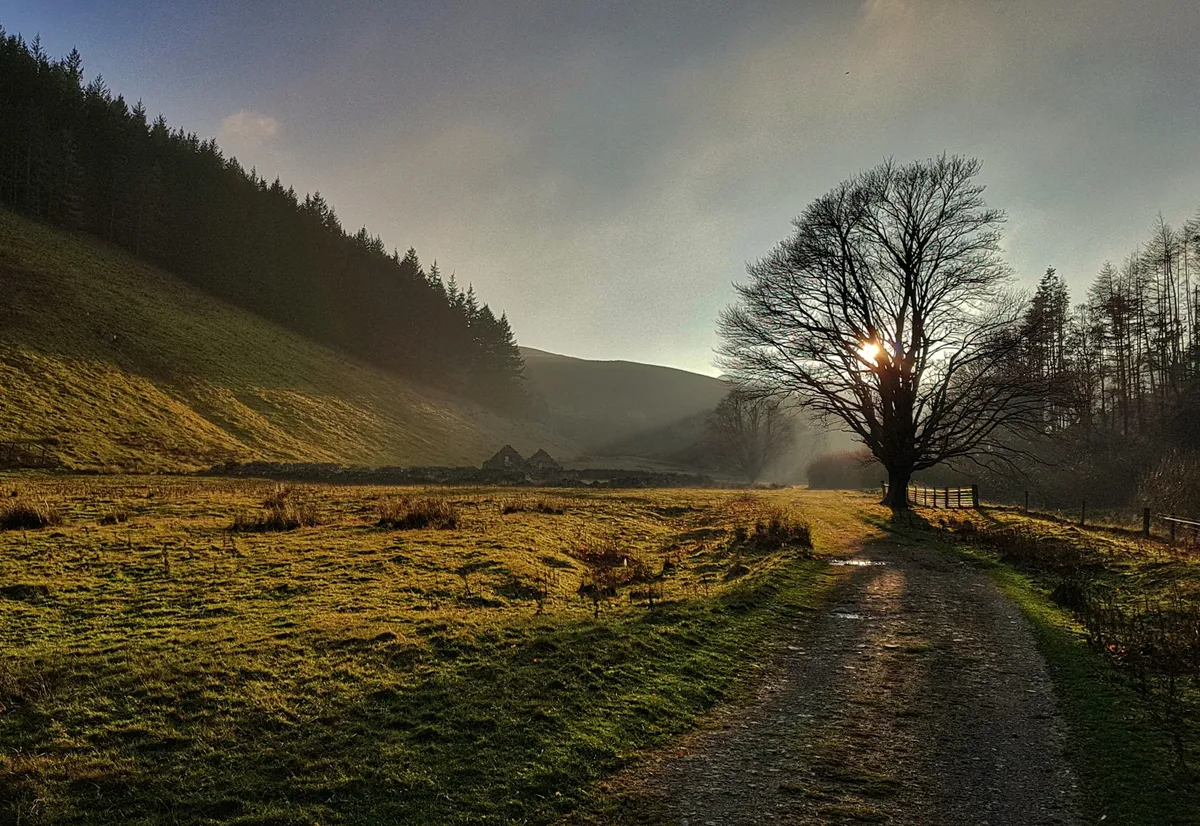
Located near the small town of Innerleithen, the Elibank and Traquair Forest is largely coniferous but contains delightful pockets of ancient woodland, along with fine views from the hillsides over the pretty River Tweed.
The woodland can be explored on a network of walking trails, in addition to two long-distance paths: the Southern Upland Way and the Cross Borders Drove Road.
Loch Ard Forest, Stirlingshire
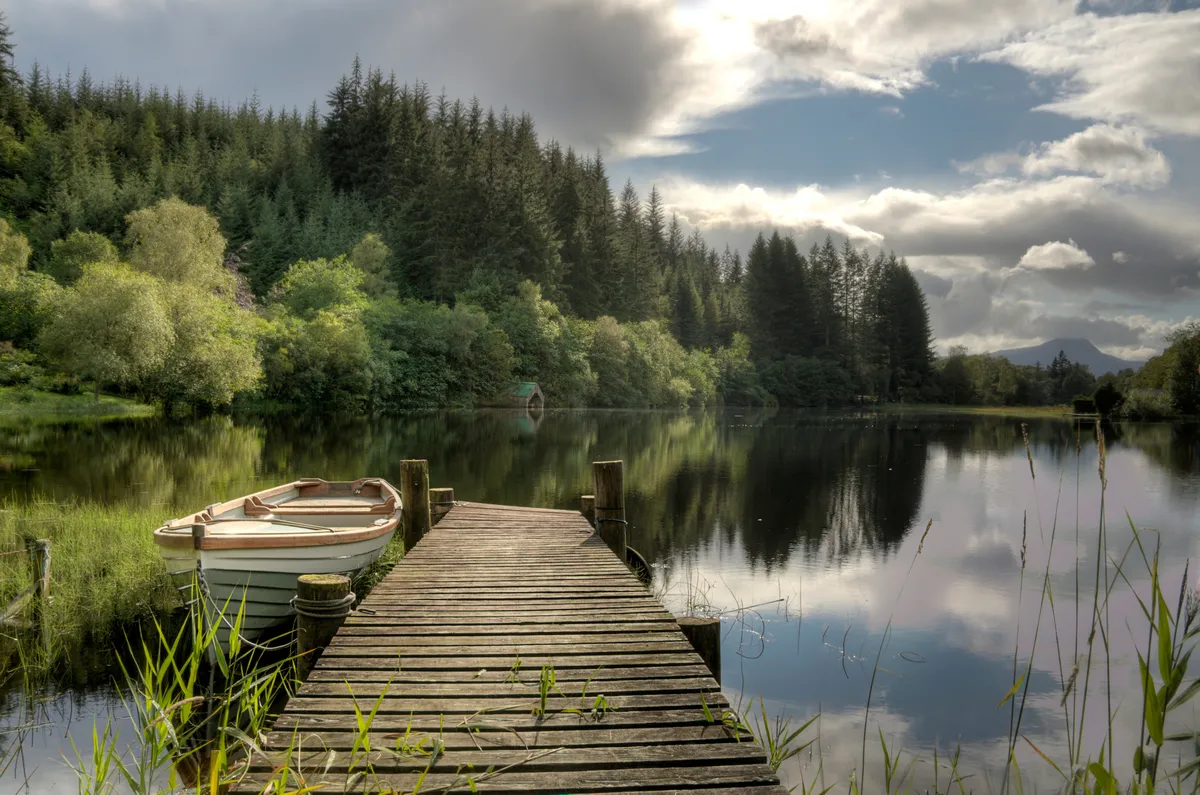
The great Loch Ard Forest extends west from the attractive village of Aberfoyle towards the rugged hills beside Loch Lomond.
It is something of a hidden treasure, boasting no less than 17 different species of conifer alongside remnants of ancient oaks. Wildlife includes red and roe deer, pine martens, otters, red squirrels and reintroduced water voles.
Loch Ard Forest walking route and map
Killiecrankie, Perthshire
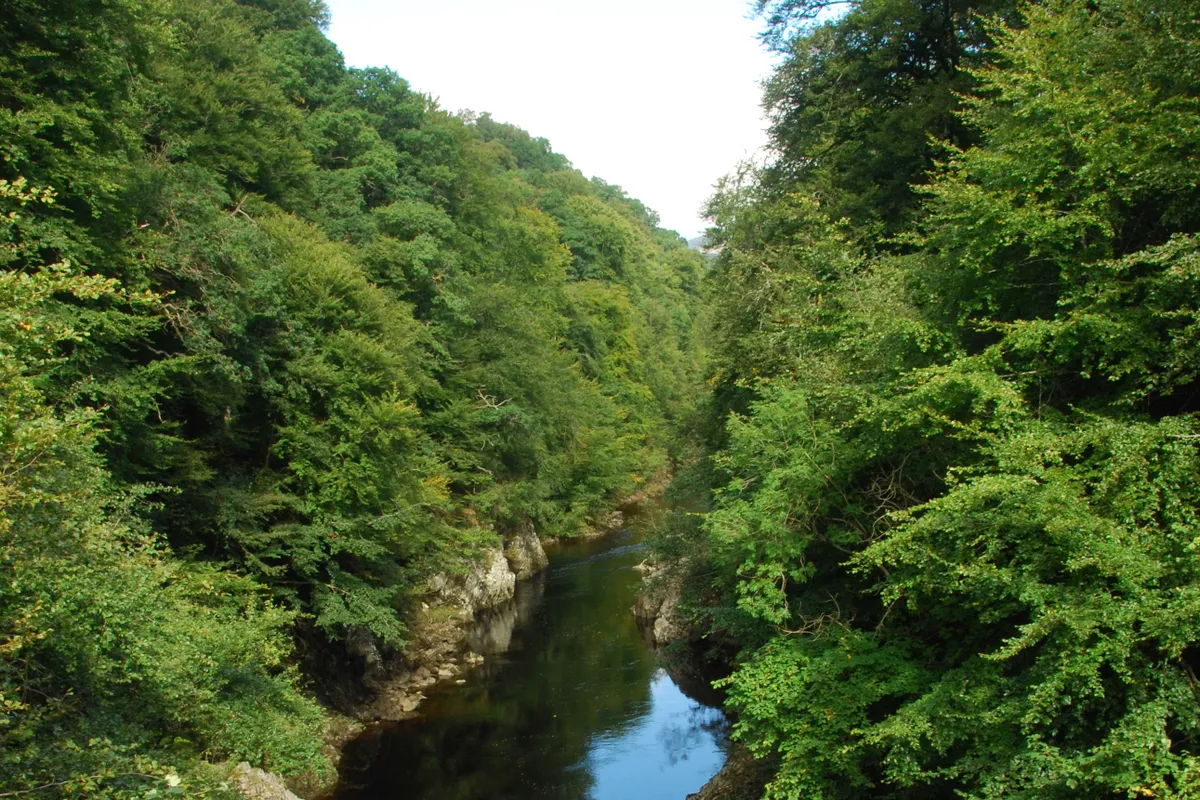
In Gaelic, the Pass of Killiecrankie – Coille Chneagaidh – translates to ‘wood of shimmering aspen’. It’s an appropriate name, especially in September when the trees are bathed in golden light. At this time of year, the bright, variegated hues of summer are on the wane, allowing the subtler notes of the forest to shine: a huddle of toadstools clinging to the buttressed roots of an old oak; a drilling woodpecker, and a red squirrel on the hunt for nuts and seeds flowing through the forest’s tired rafters like a cinder from the fire.
Pressmennan Wood, East Lothian
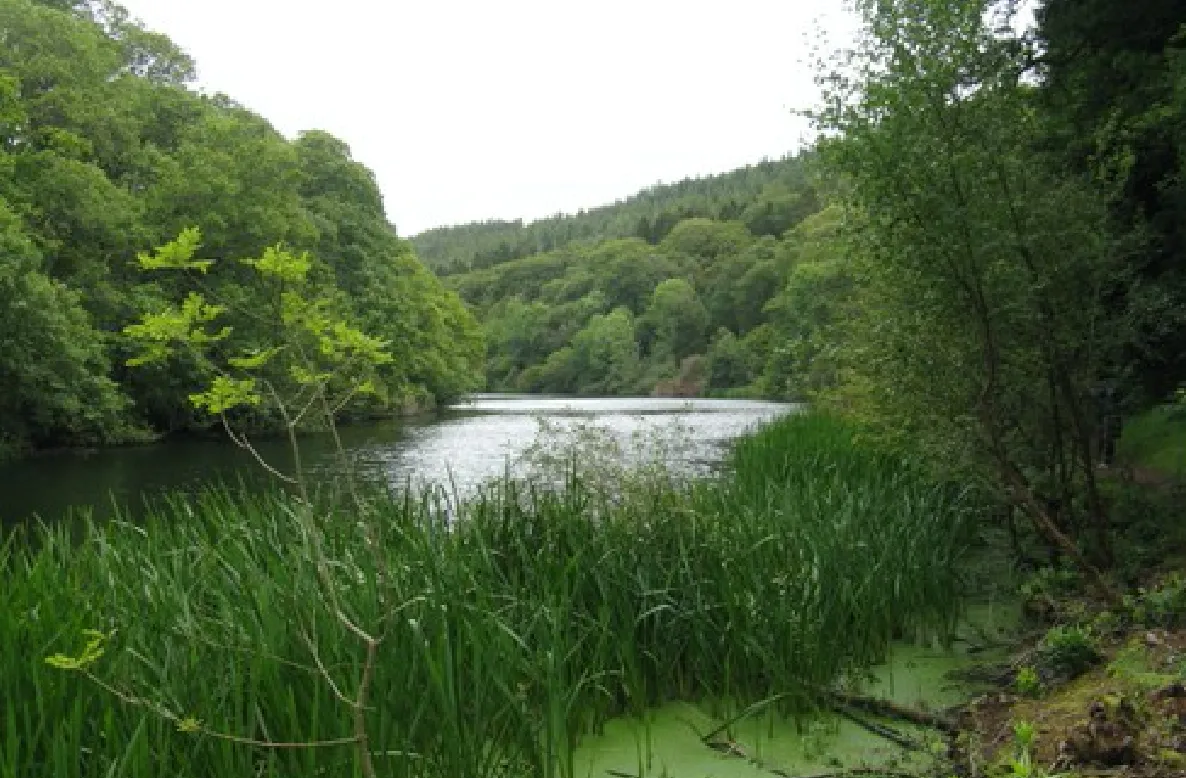
Forests and woodlands have forever been entwined with our folk tales, myths and legends. And Pressmennan Wood is no exception.
Glingbobs and Tooflits are the creation of the Woodland Trust Scotland and author Robin Wood. They exist in and around the woodland, hiding behind secret doors and stained-glass windows set into the trees, and children are tasked with finding them as they follow the trail through the trees.
Located on the slopes of Deuchrie Dod, the forest is home to a variety of flora, from conifers, to wild garlic, dog’s mercury and wild raspberries.
Glen Finglas, Stirling
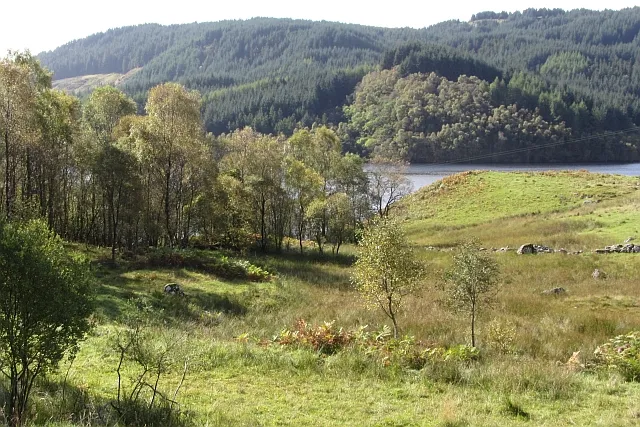
This spot is the Woodland Trust’s largest estate, and one of their most beautiful and most accessible, with great routes to explore the woodland wheelchairs and buggies.
Found in the heart of the Loch Lomond and the Trossachs National Park, the area is home to some of Scotland’s oldest trees, stunning waterfalls, lochs and heathland. Parts of the forest such as Little Drum Wood have excellently surfaced paths, opening up this wonderful country space to all.
Best forests and woodlands in Wales
Cwm Rheidol, Ceredigion
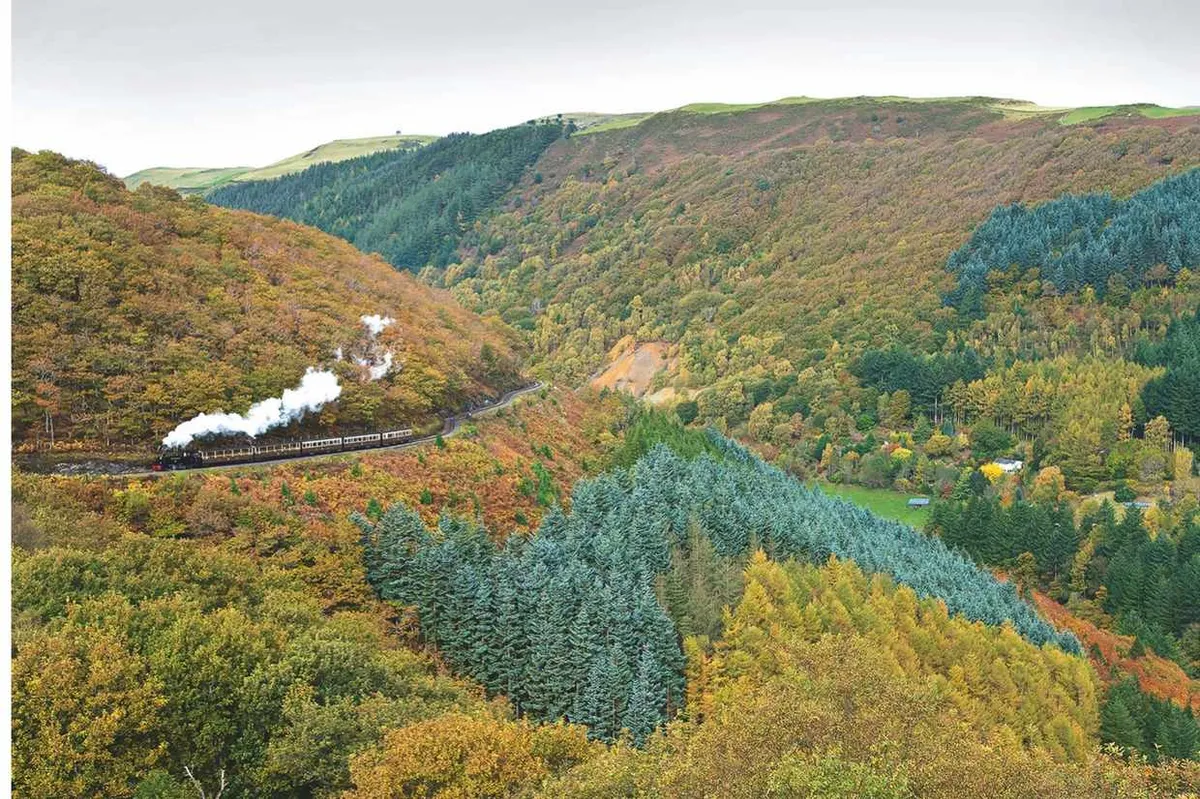
Journey on a steam train through the coppery autumn hues of a narrow valley amid hissing steam and blasting whistles on the Vale of Rheidol Railway, spotting rare mammals and lively falls.
The Vale of Rheidol Railway was opened in 1902 to export lead and timber, and to import passengers into the valley’s densely wooded heart. These days, a journey on the steam train from Aberystwyth to Devil’s Bridge is still the best way to appreciate the extent of Cwm Rheidol’s woodiness.
Plas Power Woods, Wrexham
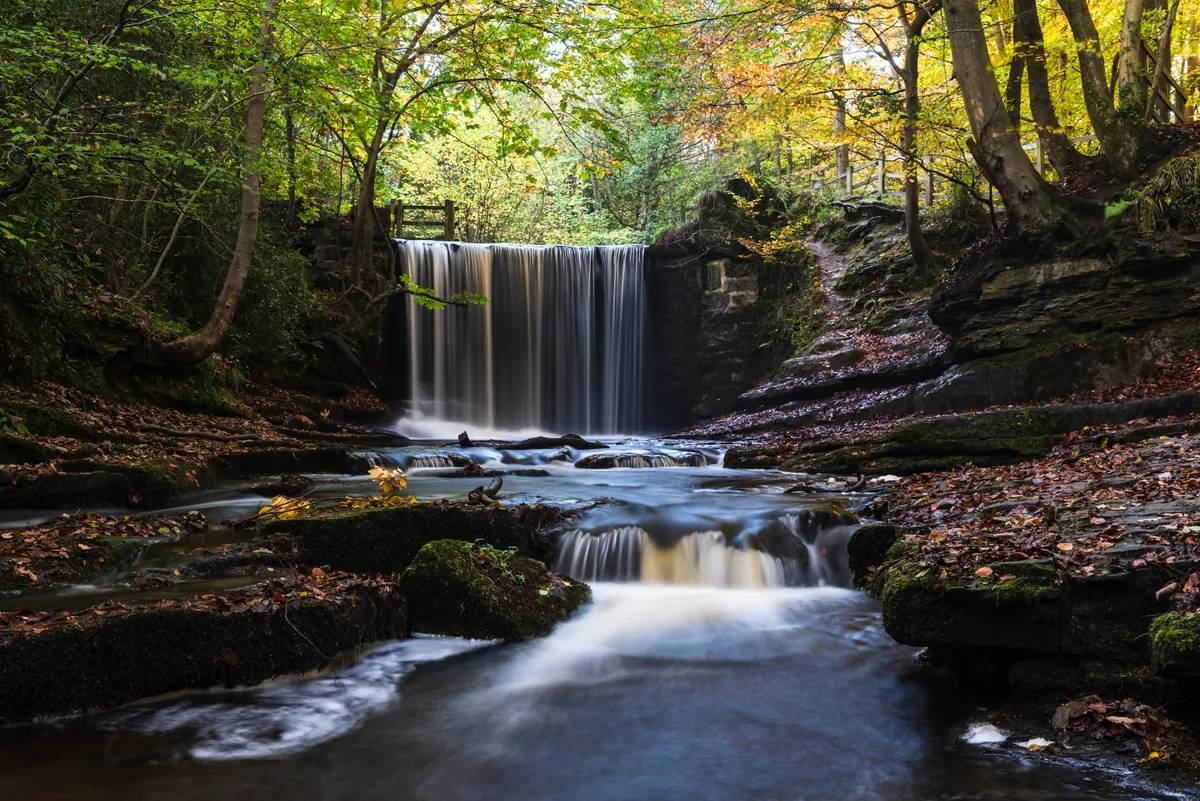
The conurbation of Wrexham is better known for its Industrial Age production of coal, iron, lead and beer than for its forests and streams. But its industries, while fuelled by an abundance of limestone and minerals, were also dependent on fresh water and timber.
The Vale of Clywedog wriggles greenly defiant through a part of the map that red lines and grey blocks dominate. In autumn, ferns, ivy and holly provide a green Van Gogh-like contrast to the orange iron-rich river and the riotous pumpkin-coloured canopy of sycamore and beech. Stag beetle and millipede sculptures present the Woodland Trust’s intention to restore Plas Power to ancient woodland. The conifers that supplied the industry grew so dense that the woodland became known as Black Wood. They are being slowly removed.
- Check out our Plas Power Woods walking route
Coed y Brenin, Snowdonia
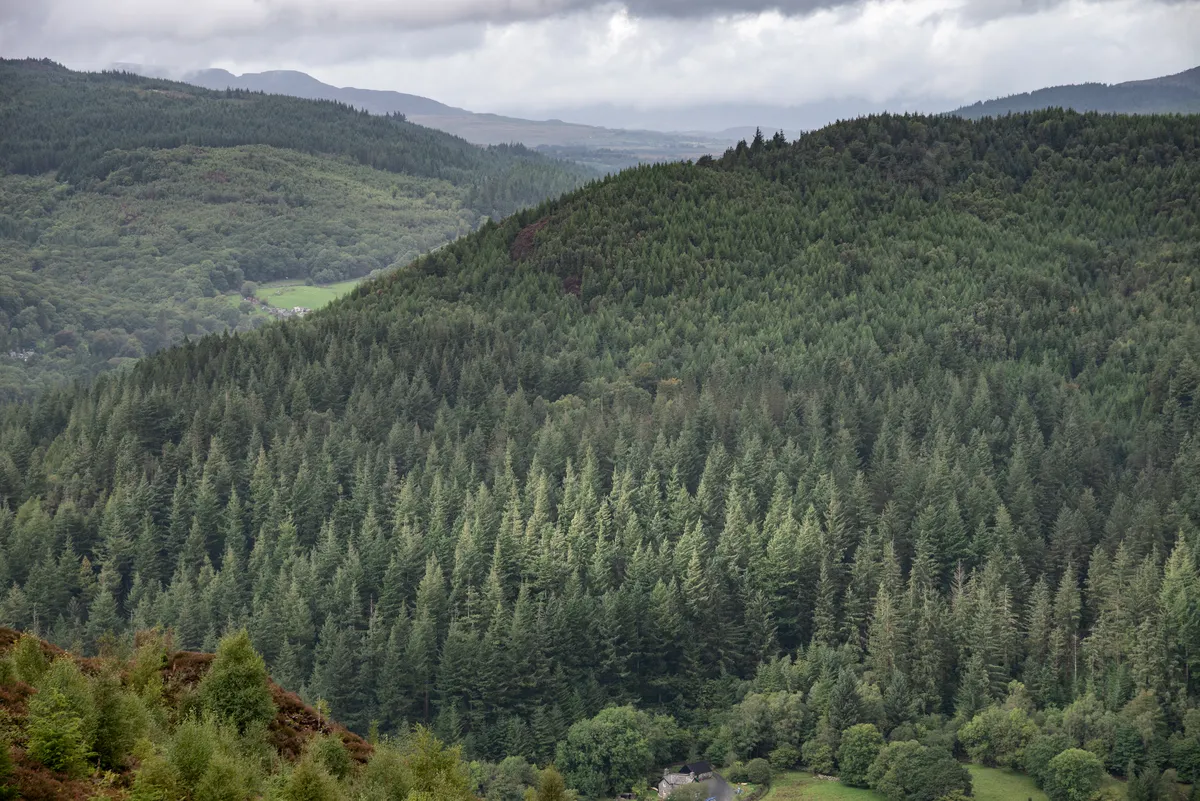
Coed y Brenin Forest Park covers 9,000 acres of woodland and river valleys. Its 500-million-year-old rocks with their deposits of copper and gold once made it a centre for mining. Now it’s managed for timber and recreation, with well-marked mountain-bike, walking and running trails.
How many forests are there in the UK?
According to the latest report by Forest Research, which was released in September 2022, the UK has 1.42 million hectares of certified woodland, which includes all Forestry Commission, Forestry and Land Scotland, Natural Resources Wales and Forest Service woodland. Around 44% of all woodland is certified.
It estimates that the total area of woodland (including uncertified areas) in the UK as of 31st March 2022 is 3.24 million hectares. This represents 13% of the total land area in the UK, 10% in England, 15% in Wales, 19% in Scotland and 9% in Northern Ireland.
Who looks after Britain's forests and woodlands?
The Forestry Commission recently celebrated its centenary, marking 100 years since essential work and tree planting was carried out to replenish Britain's forests after the First World War. While the state owns much of the woodlands in Britain, the government body, the Forestry Commission, maintains the majority of the woodlands and forests in England. In Wales, the commission merged with Natural Resources Wales in 2013.
In Scotland, woodlands and forests are looked after by Forestry and Land Scotland while Scottish Forestry is responsible for policy and regulation.
In Northern Ireland, forests are managed by the Forest Service of Northern Ireland.
Additionally, the Woodland Trust is the UK's largest woodland conservation charity, caring for more than 1,000 woods throughout the UK and working on restoring, protecting and planting trees.
What is the definition of ancient woodland?
The most stable ecosystems are the oldest, the least disturbed, the most natural, the ancient. ‘Ancient’ woods are, by the definition of our own era, older than AD1600. Why 1600? Because after that date, woodland planting began and has become commonplace ever since, so before that date the chances are that woods evolved by nature’s hand and at nature’s pace, like the mountains and the oceans.
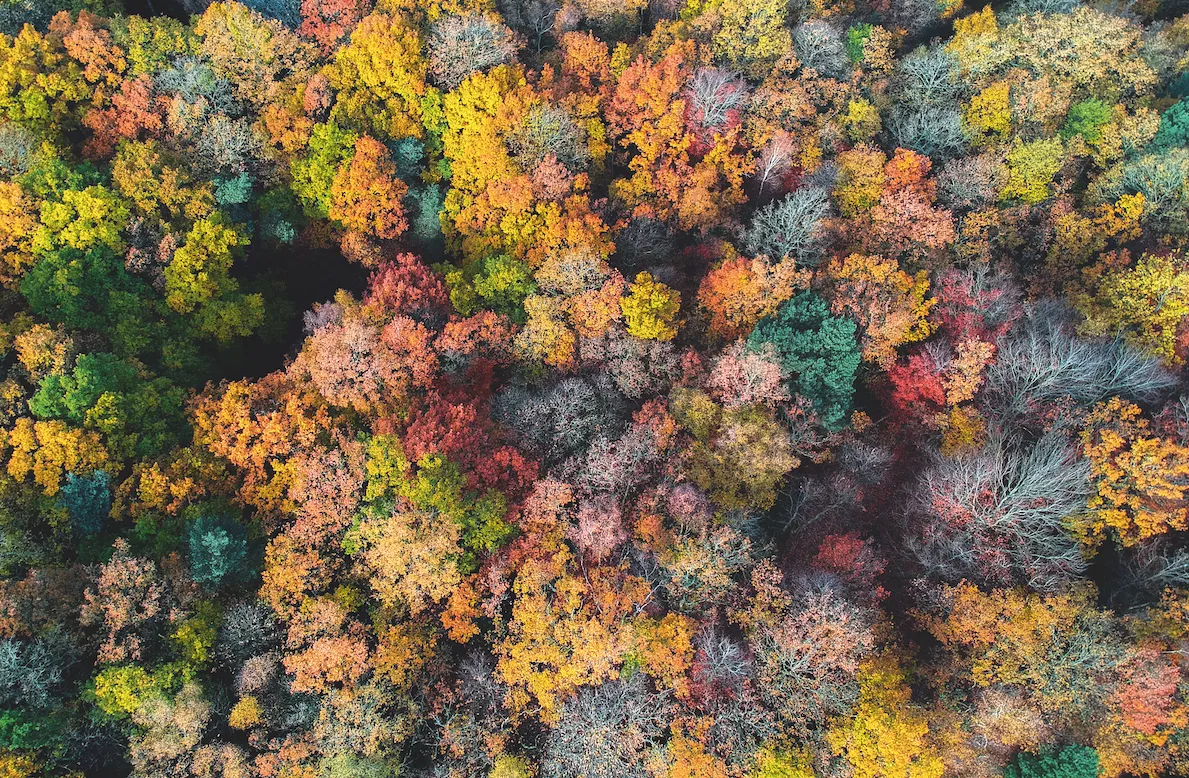
What does the Forestry Commission do?
The Forestry Commission is England’s largest land manager and custodian of the nation’s public forests. It manages the nation's forests, which consists of around 20% of England's woodland.
